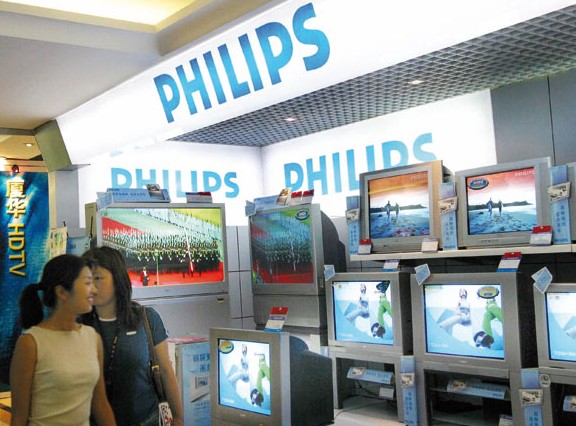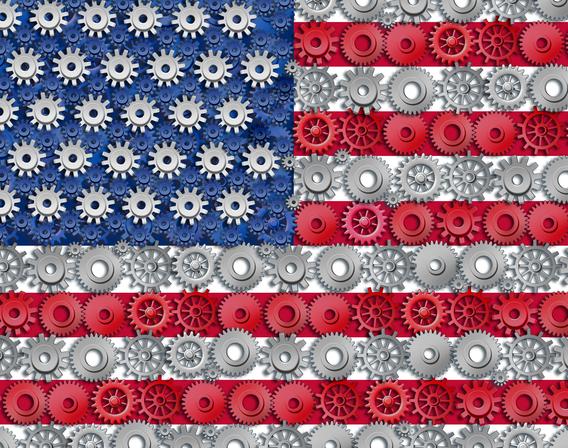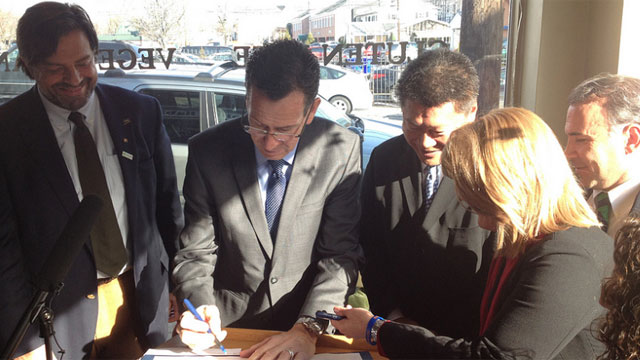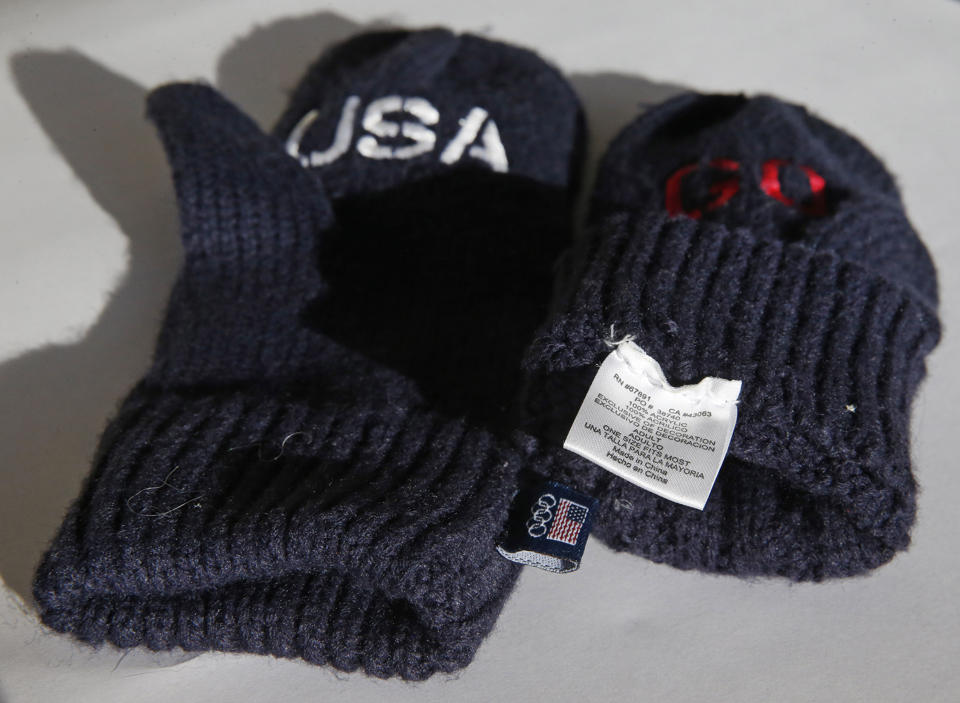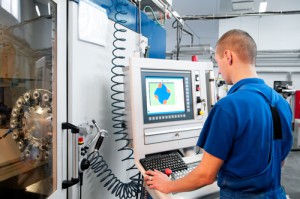For Dutch engineering and electronics conglomerate Philips NV, improved automation and smarter robots meant it made more sense financially to build a new factory in Drachten in 2012 than extend its operations in China.
Philips found the robots to be more productive than workers in Guangdong in southern China, where it, like many other foreign multinationals, had to contend with rising labor and raw material costs and occasional staff shortages.
General Electric Co took arguably a bigger gamble by opting to reshore some production from China to its Appliance Park in Louisville, Kentucky, in 2012.
There, GE was able to redesign one of its water heaters and slash the time it takes to get them to warehouses. Efficiency rose and material costs fell by more than 20 percent, enabling it to lower the US retail price of its GeoSpring heater from $1,599 to $1,299. GE also returned production of some washing machines and refrigerators to the US.
Similar cases have been popping up over the past five years as more European and US companies find it makes more sense to return jobs and production home, a strategy known as reshoring.
These moves mostly involve companies that sell mainly to their domestic markets. And they indicate that China.s competitiveness as a global low-cost production base is waning.
“A number of German companies operating in China have told me that it makes less and less sense for them to manufacture their products here and export them to Europe,” says Stefan Gessner, general manager of Linder + Wiemann GmbH, a German company that sources equipment for stamping tools in China.
“This is mostly because labor costs are rising while subsidies and other forms of support from the Chinese government are shrinking,” he says. “For those that decide to remain or expand here, it seems to be more a case of go local to stay local.”
Labor costs have shot up by as much as 500 percent in China since the turn of the century. In line with the changing expectations of Chinese factory workers, the average annual urban income jumped to 41,799 yuan ($6,850) in 2011, up from 24,721 yuan in 2007, according to the National Bureau of Statistics.
Boston Consulting Group, which has published a series of papers on reshoring, predicts that ongoing trends could “virtually close the price gap” for most products sold in the US in a couple of years. A similar argument can be made for Europe.
“Within five years, the total cost of production for many products will be only about 10 to 15 percent less in Chinese coastal cities than in some parts of the US where factories are likely to be built,” BCG wrote in 2011.
“Factor in shipping, inventory costs and other considerations, and — for many goods destined for the North American market — the cost gap between sourcing in China and manufacturing in the US will be minimal.”
Small in scaleThe number of reported cases of companies that have returned their manufacturing operations back home is limited. There are around 100 in the US, even fewer in Europe.
In July, the Financial Times described the trend among United Kingdom companies as “modest”. Meanwhile, French Industry Minister Arnaud Montebourg said recently that “only a few” French companies have decided to go down this road, or given it serious thought.
Ioana Kraft, general manager of the Shanghai office of the European Chamber of Commerce in China, says,”I have not heard of any major reshoring moves recently (among our members). I recall one or two companies having done so in 2012, but nothing in 2013.”
Yet even such fledgling moves hint at the changing dynamics of the global playing field. The US, for example, now has highly competitive energy prices and its workers are among the most highly skilled and efficient in the world.
According to Harry C. Moser, founder and president of the US-based
Reshoring Initiative, a nonprofit organization, Europe is starting to follow in the footsteps of the trailblazing Americans. In this context, the trail being blazed can seem more like a retreat to safer shores.
“Europe is behind the US, but it.s starting to push hard,” says Moser. “It is spreading in the Netherlands and France and there is interest in the UK, Switzerland, Italy and Belgium.”
Local academics say they expect it to keep gaining momentum. “This reshoring trend is quite prominent — and it.s going to continue in the near future,” says Xu Bin, a professor of economics and finance at the China Europe International Business School, which has its main campus in Shanghai.
Lower marginsAccording to a report published by the Reshoring Initiative in July, higher wages have been the main reason for most of the reshoring activities by US companies. By the same token, the European Chamber of Commerce.s Business Confidence Survey 2013 reports that 63 percent of European companies it polled rank this as the most significant challenge they will face in their future business in China.
“Tougher business conditions, both globally and in China, have led to a diminished financial performance for European companies in China in recent years,” the report said. “Profitability is on a clear downward slide and high margins may be increasingly a thing of the past.”
Despite this, 86 percent of respondents said they were considering expanding their operations in China, with 41 percent now considering mergers and acquisitions. Moreover, while some 22 percent of European companies were thinking of moving their current or planned investments in China to a different country in 2012, the number has since fallen to 10 percent.
As the logic of “going local to stay local” increasingly rings true, 75 percent of respondents to the survey said their primary reason for being here was to serve the Chinese market, up from 72 percent in 2012.
Other reasons for leaving cited by US companies were the unfavorable exchange rate, quality issues, freight costs, delivery problems and deadlines not being met, as outlined by the Reshoring Initiative.s report.
Among the examples it gave were Sleek Audio LLC, which took manufacturing jobs back to Florida after losing hundreds of thousands of dollars in scrap — and more in lost sales — because of poor quality control in China. Scovill Fasteners Inc cited rising salaries and the fact that a quarter of its staff failed to return from their annual holidays in explaining its decision to go back to Georgia.
Other drivers compelling companies to jump ship include high oil prices, which make international shipping more costly, and friendlier investment climates in the US and parts of Europe.
“Current research shows many (US) companies can reshore about 25 percent of what they have offshored and improve their profitability,” says Moser.
He provided statistics showing that the number of manufacturing jobs offshored from the US grew by 100,000 to 150,000 annually from 2000 to 2008, compared with about 2,000 a year that reshored.
That equation has since changed dramatically to between 30,000 and 50,000 jobs a year being offshored versus 30,000 a year that are reshoring, he said. If true, this illustrates how the mass exodus out of the West five years ago has been replaced by a growing sense of equilibrium.
“New offshoring is down 70 percent to 80 percent, and new reshoring is up about 1,500 percent,” he says.
However, while high-profile companies such as Caterpillar Inc, Google Inc and Ford Motor Co have followed the reshoring trend, finance professors and business consultancies in Shanghai warn against overplaying the situation.

